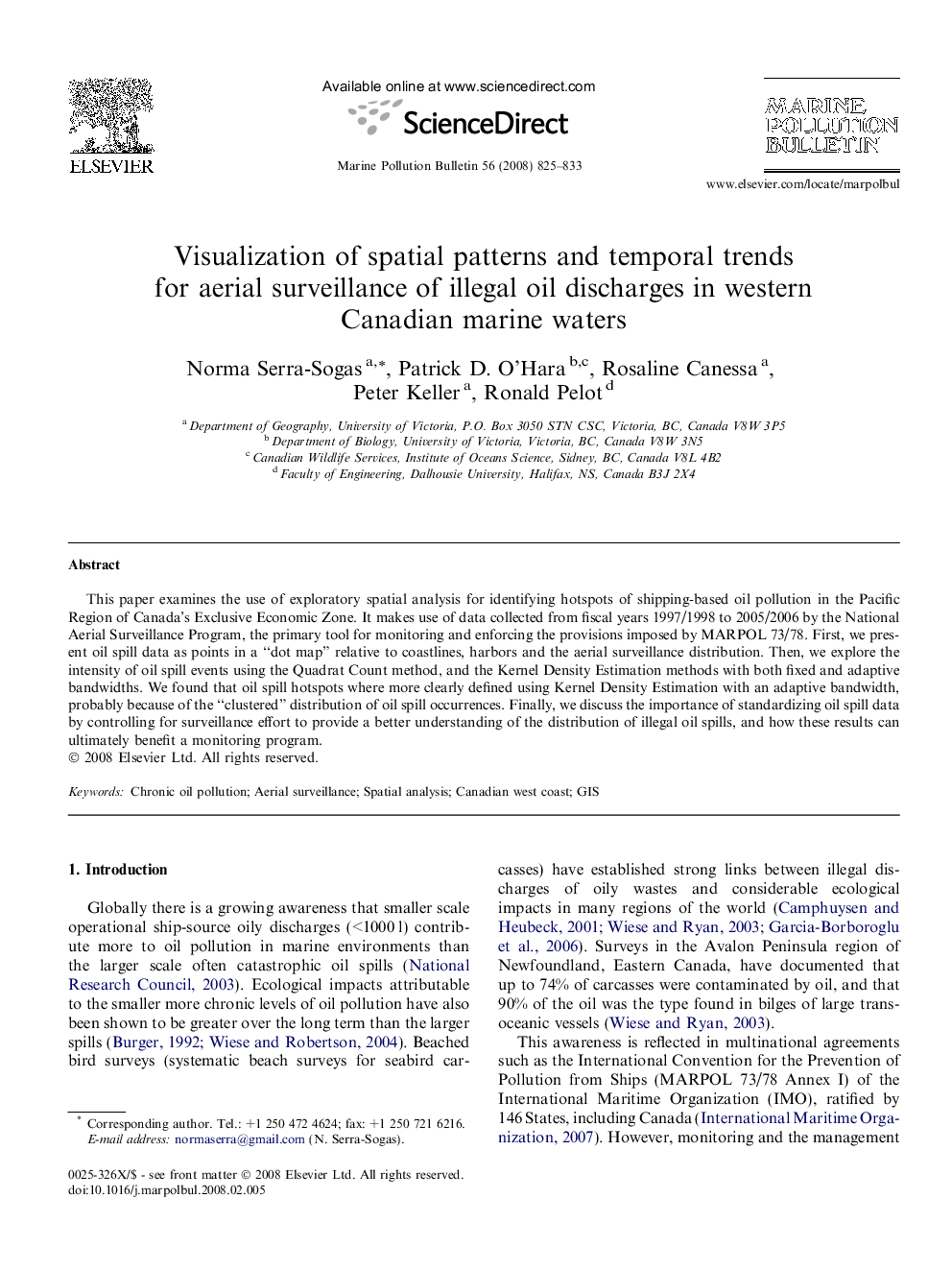| Article ID | Journal | Published Year | Pages | File Type |
|---|---|---|---|---|
| 4477583 | Marine Pollution Bulletin | 2008 | 9 Pages |
This paper examines the use of exploratory spatial analysis for identifying hotspots of shipping-based oil pollution in the Pacific Region of Canada’s Exclusive Economic Zone. It makes use of data collected from fiscal years 1997/1998 to 2005/2006 by the National Aerial Surveillance Program, the primary tool for monitoring and enforcing the provisions imposed by MARPOL 73/78. First, we present oil spill data as points in a “dot map” relative to coastlines, harbors and the aerial surveillance distribution. Then, we explore the intensity of oil spill events using the Quadrat Count method, and the Kernel Density Estimation methods with both fixed and adaptive bandwidths. We found that oil spill hotspots where more clearly defined using Kernel Density Estimation with an adaptive bandwidth, probably because of the “clustered” distribution of oil spill occurrences. Finally, we discuss the importance of standardizing oil spill data by controlling for surveillance effort to provide a better understanding of the distribution of illegal oil spills, and how these results can ultimately benefit a monitoring program.
